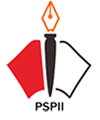KNOWLEDGE MANAGEMENT IN ISLAMIC HIGHER EDUCATION (A Case Study on Implementation of Knowledge Management Tools in UIN SGD Bandung)
DOI:
https://doi.org/10.15575/jpi.v2i1.702Keywords:
Knowledge, Management, Knowledge of Management Tools, Intellectual Assets, Technology Infrastructure, Organization.Abstract
The demand on the implementation of knowledge management is even greater at higher education institutions as an institution that intersect with many academic activities and the development of a scientific assessment as occurs in UIN Sunan Gunung Jati Bandung. This study tried to explore and analyze how UIN SGD Bandung run management practices and various activities in it, especially within the framework of the management of intellectual assets owned as an important step of applying the knowledge management. More specifically, this study used a qualitative approach with descriptive-holistic methods and case study analysis, have tried to analyze the use of knowledge management tools in UIN SGD Bandung. This study in its analysis found that there are many deficiencies essentially and conceptually in the implementation of knowledge management conducted by the management UIN SGD Bandung. Some knowledge management tools, such as technology infrastructure, collaboration tools, taxonomy, also has not been applied properly. However, the cycle of activities related to the conversion process of knowledge, such as socialization, externalization, combination, and internalization, has been done in UIN SGD Bandung.
References
____________ & Konno, N., (1998). “The Concept of Ba: â€Building a Foundation for Knowledge Creation,†dalam California Management Review, 40-3, 1998.
____________., (2003). Manajemen, Dasar, Pengertian, dan Masalah. Edisi Revisi Jakarta: PT. Bumi Aksara.
____________., (2008). Sumber Daya Manusia Stratejik. Bandung: La Good’s Publishing.
Anand, Apurva & Singh M.D., (2011). “Undertanding Knowledge Management: A Literature Review,†dalam International Journal of Engineering Science and Technology (IJEST), (Uttar Pradesh, India, Vol. 3. No. 2., Februari 2011).
Berg, Bruce L., (2001). Qualitative Research Methods for The Social Sciences, 4th Edition, (New York: Allyn & Bacon, A Pearson Education Company, 2001).
Bhattacherjee, Anol., (2012). Social Science Research: Principles, Methods, and Practices. Florida: Scholar Commons University of South Florida, USF Tampa Library Open Access Collection.
Blundel, Richard., (2007). “Critical Realism: A Suitable Vehicle for Entrepreneurship Research?†dalam Helle Neergaard & John Parm Ulhoi (ed), Handbook of Qualitative Research Methods in Entrepreneurship. London: Edward Elgar Publishing.
Bukowitz, Wendi & Williams, Ruth L., (1999). The Knowledge Management Fieldbook. New Jersey: FT Press.
Cohen, Louis, et. al., (2000). Research Methods in Education, 5th Edition, London: Routledge Falmer. Creswell, John W. 2007. Qualitative Inquiry & Research Design, Choosing Among Five Approaches. London: Sage Publishing, 2007.
Dagli, Gökmen, et. al., (2009). “A Qualitative Research on the University Administrators’ Capacity to Use Management Knowledge Tools (The Case of TRNC Universities),†dalam Educational Sciences: Theory & Practice. Istanbul, Edam.
Dalkir Kimiz., (2005). Knowledge Management in Theory and Practice. UK: Elsevier Inc.Douglas, Hall T. & James, Goodale G. 1986. Human Resources Management, Strategy, Design and Impelementation. Glenview: Scott Foresman and Company.
Faustino, Cardoso Gomes., (2003). Manajemen Sumber Daya Manusia, Yogyakarta: Penerbit Andi.
Flick, Uwe., (2009). An Introduction to Qualitative Research, 4th Edition. London: Sage Publishing.
Flippo, Edwin B. Manajemen Personalia, Edisi 6. Jakarta: Penerbit Erlangga.
Frensidy, Budi., (2007). “Persaingan Perguruan Tingi Indonesia: A Lossers’ Game,†dalam Usahawan No. 08, XXXVI Agustus.
Groff, Todd & Jones, Thomas., (2012). Introduction to Knowledge Management, London: Routledge.
http://forlap.dikti.go.id/perguruantinggi/homegraphpt
http://id.wikipedia.org/wiki/Daftar_perguruan_tinggi_Islam_negeri_di_Indonesia
http://www.ditpertais.net/ptais01.htm
http://www.webometrics.info/en/Asia/Indonesia%20
Kementrian Pendayagunaan Aparatur Negara dan Reformasi Birokrasi., (2011). Buku 8, Pedoman Pelaksanaan Program Manajemen Pengetahuan, Peraturan Menteri Negara Pendayagunaan Aparatur Negara dan Reformasi Birokrasi Nomor 14 Tahun 2011, Jakarta: Kementrian Pendayagunaan Aparatur Negara dan Reformasi Birokrasi.
Liebowitz, Jay., (1999). Knowledge Management Handbook. Florida: CRC Press.
Mikulecka, J. & Mikulecky, P., (2000). “University Knowledge Management, Issues and Prospects†dalam Djamel A. Zighed, Jan Komoroswki, Jan Zykow, Principles of Data Mining and Knowledge Discovery 4th European Conference Proceedings. Lyon, France: Springer-Verlag Publisher.
Nonaka, I. & Takeuchi, H., (1995). The Knowledge-Creating Company.New York: Oxford University Press.
Rivai, Veithzal., (2005). Manajemen Sumber Daya Manusia untuk Perusahaan dari Teori ke Praktik. Jakarta: PT Raja Grafindo Persada.
S. P, Malayu Hasibuan., (2000). Manajemen Sumber Daya Manusia. Jakarta: PT. Bumi Aksara.
Shavinina, Larisa V., (2003). The International Handbook on Innovation, Amsterdam: Elsevier.Simamora, Henry. 2004. Manajemen Sumber Daya Manusia. Yogyakarta: Andi Offset.
Snape, Dawn & Spencer, Liz., (2003). “The Foundations of Qualitative Researchâ€, dalam Jane Ritchie & Jane Lewis (ed), Qualitative Research Practice, A Guide for Social Science Students and Researchers. London: Sage Publishing.
Stehr, Nico & Grundmann, Reiner., (2005). Knowledge: Critical Concepts, Vol. 3. UK: Taylor & Francis.
Sulastri, Lilis., (2009). Pengantar Manajemen. Bandung: LaGood’s Publishing.
Uriarte Jr., Filemon A., (2008). Introduction to Knowledge Management. Jakarta: ASEAN Foundation.
Walliman, Nicholas., (2011). Research Methods, The Basics. New York: Routledge.
Downloads
Published
Issue
Section
Citation Check
License
Authors who publish with this journal agree to the following terms:
- Authors retain copyright and grant the journal right of first publication with the work simultaneously licensed under a Attribution-ShareAlike 4.0 International (CC BY-SA 4.0) License that allows others to share the work with an acknowledgment of the work's authorship and initial publication in this journal.
- Authors are able to enter into separate, additional contractual arrangements for the non-exclusive distribution of the journal's published version of the work (e.g., post it to an institutional repository or publish it in a book), with an acknowledgment of its initial publication in this journal.
- Authors are permitted and encouraged to post their work online (e.g., in institutional repositories or on their website) prior to and during the submission process, as it can lead to productive exchanges, as well as earlier and greater citation of published work (See The Effect of Open Access).






